Locations: Nonoshima and Katsurashima, Miyagi
Excursions Around Matsushima Bay
Entry 1: August 3, 2019
At Toguhama, site of the northernmost harbor on the Shichigahama Peninsula, I park my car on the wharf and head for the Jonathan’s mooring. The weather’s been hot for days—mid-thirties. There’s just one man fishing off the jetty, as the tide hits its low point; he gazes idly from under a wide-brimmed hat pretty much like mine.
For thirty years he saved that map, hoping one day he would be able to use it
Once we’ve crossed the mouth of Shiogama Bay, we’re looking at Katsurashima on the late side of this first Saturday morning in August. It hardly looks like more than a dozen people are on the beach there. The weather might simply be too hot for many beachgoers, just as it seems to be for fishers.
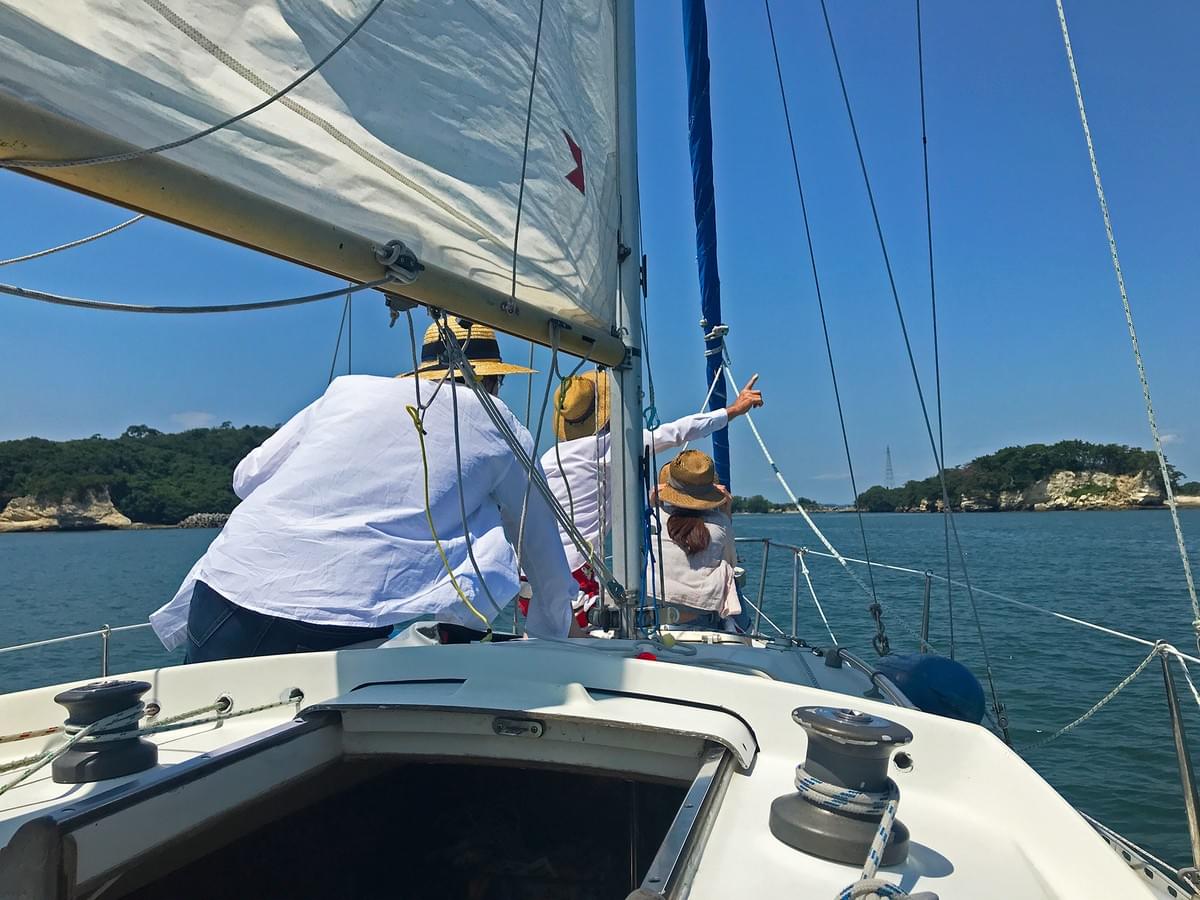
Nonoshima, not Katsurashima, is our destination today. We’ll arrive at Nono after sailing around to the north of Katsura’s eastern point. These are the first two populated islands of the group known as the Urato Shoto—the main group, at any rate, that you see when you look out over Matsushima Bay. Nono is situated between Katsura and Sabusawa. These three, with the ferry lines connecting them to each other and to the mainland at Shiogama, are detailed on the hand-drawn map that Skip has been using ever since he first sailed the Jono down from Hachinohe, Aomori in 2017.

He says that some thirty years ago, he had taught a college-level English class with a focus on tourism. He asked the students to draw maps of where they lived, highlighting each of the points of interest around their neighborhoods. Most of them reported verbally—nani mo nai—that nothing could be found around their homes. However, one young woman presented him with an A3 sheet showing a surprisingly detailed map, to scale, of the “Urato” Islands. That’s her title for the map, all drawn in colored pencil and marked up with English-language commentary on what you can find there. She had grown up on these islands.
Skip says that for thirty years he saved that map, hoping one day he would be able to use it like he’s doing now. It shows visitors all kinds of interesting things about the islands, but you have to go there in order to appreciate how beautiful these quiet places are.
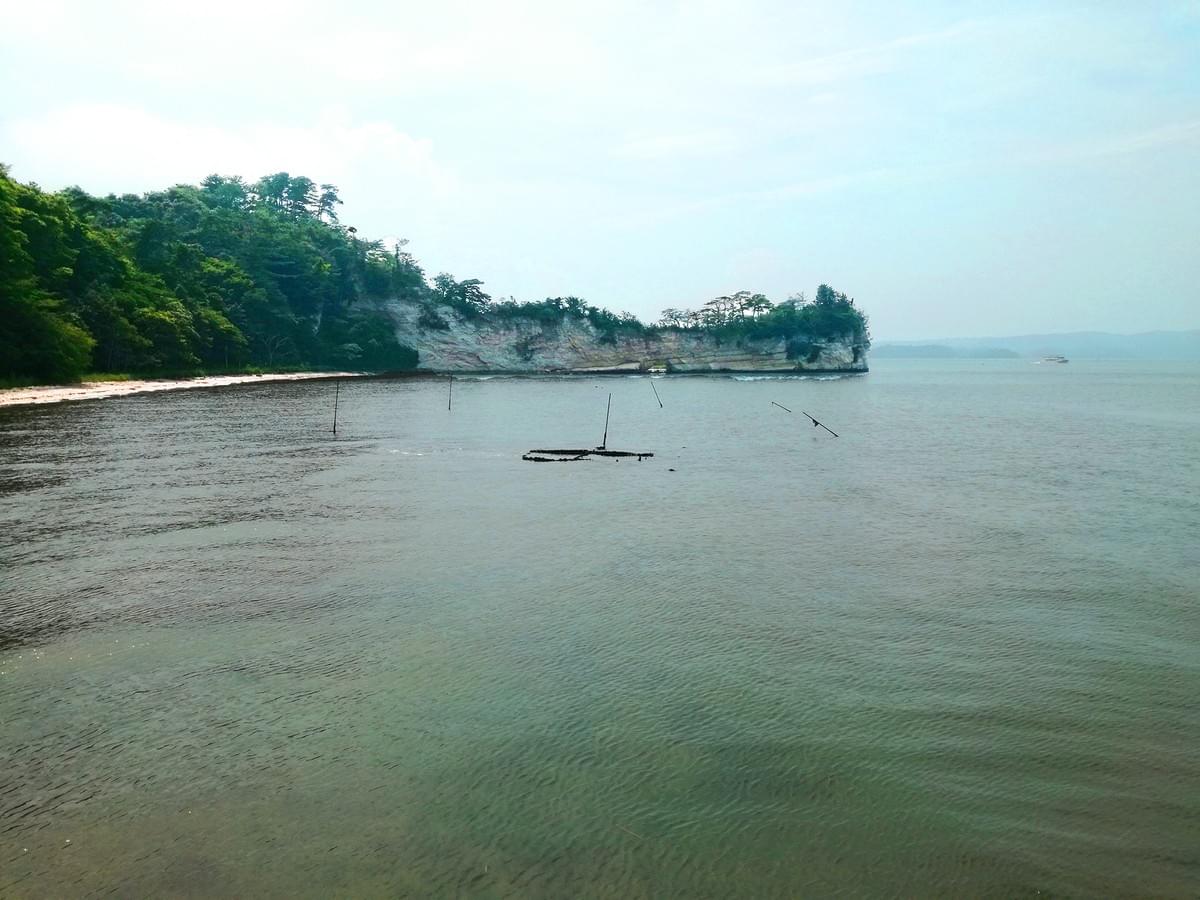
We dock. Ever since the 2011 earthquake and tsunami, the majority of Nonoshima’s residents have been occupying the temporary housing you find set up over near the wharf, but a growing number of them appear to be rebuilding homes now. We see two new houses under construction as we begin traversing the island. We’re headed up and over a little cape, to where there is a little sandy beach. And close-up like this, you can really see the care given to every inch of these islands. Like most places around here, Nonoshima features walking paths and roadsides that get cleared and widened around the beginning of August, early summer growth cut right down to the ground because if you didn’t do that all the parklands would be like jungle. Only the gigantic lilies now growing in the wild, and the odd fern, remain standing along the path.
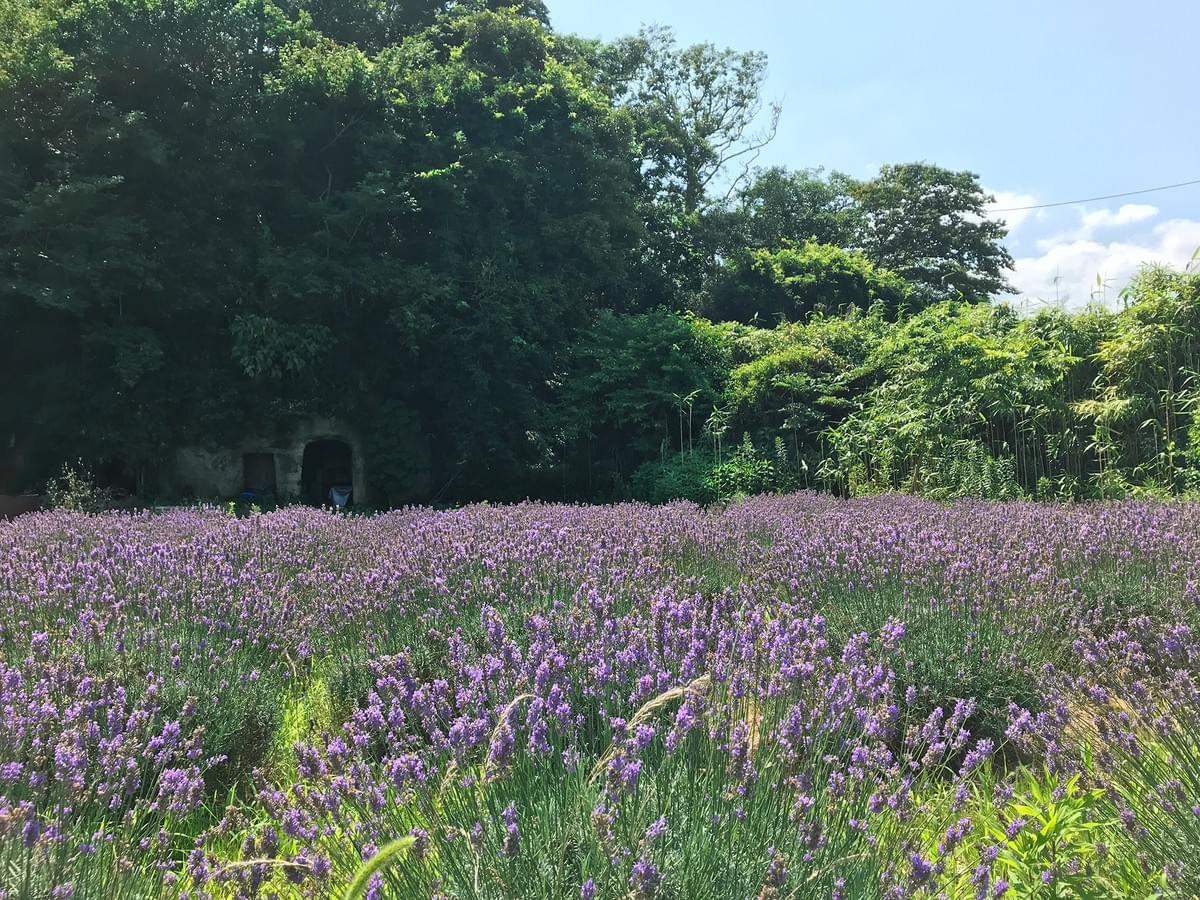
Down at the beach, the water is amazing. At one point the instruments on the boat said that we were in 28-degree water. The top thirty centimeters or so really is that warm, and underneath it is just a little cooler. I walk out into it for a bit, seeking refreshment, as the heat has been terrible since we got off the boat. On a boat, of course, you can enjoy the cool air coming off the water, and you can sit in whatever shade you have available. Walking over land to this place, now well shaded as well as secluded, exposure to the sun made us feel the heat of the day.
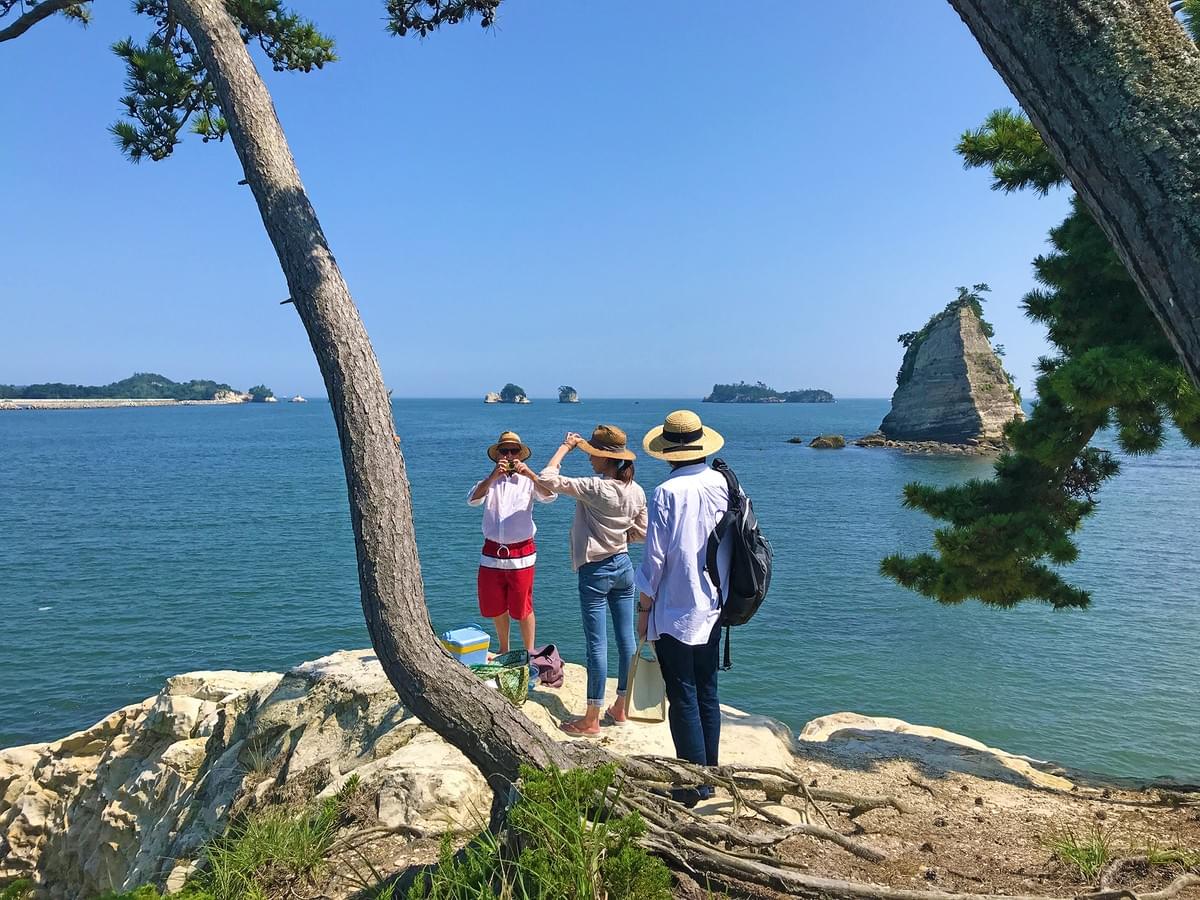
We pause for a little picnic on the beach, chatting a bit, and then head back over the cape, through the pines and the lilies and the bamboo stand, among so many cicadas our ears are ringing and things feel unreal. One cicada lands right on my shoulder, startling me to laughter as I look it right in the eye before it flies off again.
You have to go there in order to appreciate how beautiful these quiet places are
Sailing back later past the north side of Katsurashima, Skip points out how you can still imagine the smell of grilled corn, okonomiyaki and other things sold at the food stalls that used to line the wharf here. Before the 2011 tsunami, there would have been a crowd of people here any day during summer. Since the tsunami, the crowds have yet to return but each port remains industrious in some way, building itself back up because it belongs to a human heritage.
A glimpse of that heritage on its largest scale is not visible to us, not available for viewing from a sailboat. As we drift past, Skip points to a cliff jutting out from the northwestern corner of Katsurashima. He says that the cliff, too, has changed quite a bit in the recent years but that, if you stand atop it and look over the edge to the waters below, you will see a formation of stones in the water. He says it looks like a pair of tanbo no ta (田田), the kanji placed just so on the seabed, and he asks us what we think this might be for. As he is ready to explain, the eight squares within this little field can be filled with bait at low tide. Once the tide has come in, fish will gather and feed on the bait, and when the tide goes out again some fish will be trapped in the eight adjoining cells. This makes for easy fishing, and this method has been practiced here since the Jomon period. That’s at least four thousand years’ use. “Think about it,” says Skip, “Sugoi dessho.”
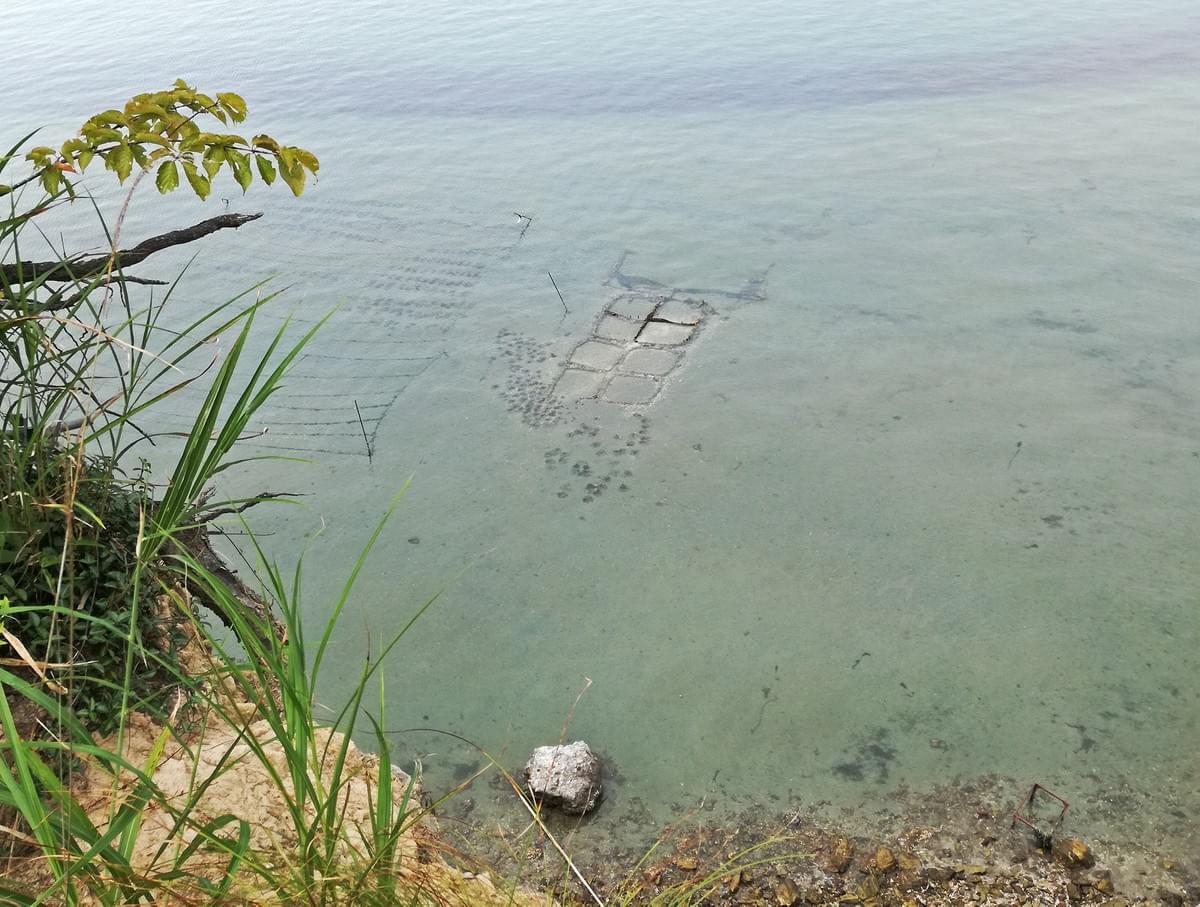
Editor’s note: Nonoshima is easily accessible even for those who aren’t sailors, via the Shiogama Municipal Ferry. The ferry ride offers scenic views similar to those described above, from different angles. See below for details.
A map of the Urato Shoto, illustrated almost as charmingly as Skip’s hand-drawn nonpareil pictured above, has been produced by Shiogama City and is available online here (English).
Location Details
Nonoshima (野々島)
Website (English): city.shiogama.miyagi.jp
Access: About 30 minutes by ferry from Marine Gate Shiogama (マリンゲート塩釜). Marine Gate Shiogama is a 10-minute walk from Hon-Shiogama Station. At Marine Gate Shiogama, board Shiogama City Ferry (塩竈市営汽船) bound for Hojima (朴島) at Gate 1. Alight at Nonoshima. Timetables here (English) and here (Japanese).
"Tanbo no ta" fishing traps
A truly off-the-beaten-path sight, these fishing traps aren't mentioned in any sightseeing guidebook, or even marked on maps. They can, however, be seen in the Satellite View on Google Maps and viewed freely in real life from the nearby shore.
Access: About 20 minutes by ferry from Marine Gate Shiogama (マリンゲート塩釜), followed by a 5-minute walk. Marine Gate Shiogama is a 10-minute walk from Hon-Shiogama Station. At Marine Gate Shiogama, board Shiogama City Ferry (塩竈市営汽船) bound for Hojima (朴島) at Gate 1. Alight at Katsurashima (桂島). Timetables here (English) and here (Japanese).

